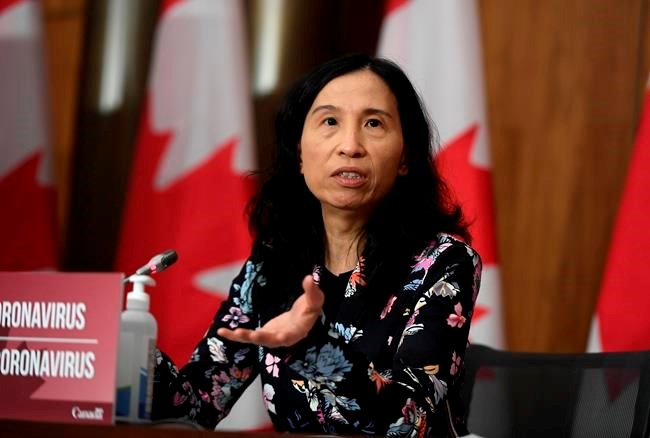Canada's top doctor warned provinces against easing stringent public health measures Saturday, just as the premier of one of the provinces hardest hit by the COVID-19 pandemic said he hoped to do exactly that in a little over a week.
Chief Public Health Officer Dr. Theresa Tam said that even though daily cases of the novel coronavirus are trending down, it's still too soon to lift lockdowns and ease other protective measures if the country hopes to bring the pandemic under control.
"It is crucial that strong measures are kept in place in order to maintain a steady downward trend," Tam said in a news release. "With still elevated daily case counts and high rates of infection across all age groups, the risk remains that trends could reverse quickly and some areas of the country are seeing increased activity."
She pointed to several concerning variants of the virus as evidence that it's too soon for the provinces to let their guards down.
One such strain, which was first detected in the United Kingdom and has already been cited as the cause of a deadly long-term care outbreak in southern Ontario, is more contagious than other strains of the virus and has begun to spread in Canada.
But even so, Quebec Premier Francois Legault took to Facebook on Saturday to say he was planning to unveil changes to the province's current public health protocols on Tuesday afternoon.
“I would like, if the situation permits, to be able to give some oxygen to retail stores,” Legault wrote.
The premier said the changes would come into effect after Feb. 8, the day a province-wide curfew is scheduled to end.
Businesses designated "non-essential" have been closed across Quebec since Dec. 25, and the province has been under an 8 p.m. to 5 a.m. curfew since Jan. 9.
On the day the curfew went into effect, Quebec reported an average of 2,685 new cases over the most recent seven-day stretch.
The province logged 1,367 new cases of the virus and counted 46 more deaths on Saturday. Officials said 14 of those deaths took place in the previous 24 hours, and the rest happened earlier.
Tam warned that outbreaks are still happening in high-risk communities, including in First Nations and remote parts of the country.
That was the case in Ontario, where a public health doctor called a small spike in COVID-19 cases in the remote northwestern part of the province a "wake-up call" for the area.
Dr. John Guilfoyle with the Sioux Lookout First Nations Health Authority said Saturday that eight total active cases recently detected across five First Nations communities -- Poplar Hill, Webequie, Pikangikum, Lac Seul and Nibinamik -- appear to have been contained, according to contact tracing and testing so far.
He characterized the containment is good news, but said it's concerning to see so many communities recording new infections.
Across Ontario, public health officials reported 2,063 new cases of COVID-19 on Saturday, along with 73 more deaths.
Farther west, Manitoba counted 166 new cases of COVID-19 on Saturday, as well as two more deaths.
Saskatchewan, meanwhile, logged 258 new cases with eight more deaths.
Alberta reported 383 cases of COVID-19 on Saturday, while the number of deaths climbed by 11.
That province, too, is planning on lifting some restrictions, with Premier Jason Kenney announcing Friday that lower hospitalization numbers allowed him to ease public health measures on indoor fitness centres, school sports, restaurants and bars. Those changes, too, are slated to take effect on Feb. 8.
In Atlantic Canada, Nova Scotia recorded three new cases of the virus and New Brunswick added 12.
New Brunswick also saw one COVID-19 patient die -- the 18th in the province since the pandemic began.
As for the new cases, more than half of them were reported in the Edmundston area of northern New Brunswick, which is currently in the midst of a full lockdown.
The number of confirmed cases in New Brunswick has risen to 1,230 since the beginning of the pandemic, by far the highest tally in Atlantic Canada. That figure includes 928 recoveries and 283 active cases.
This report by The Canadian Press was first published Jan. 30, 2021.
Nicole Thompson, The Canadian Press



